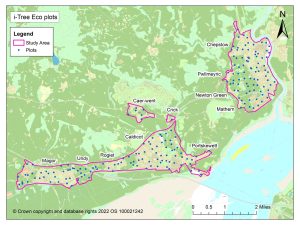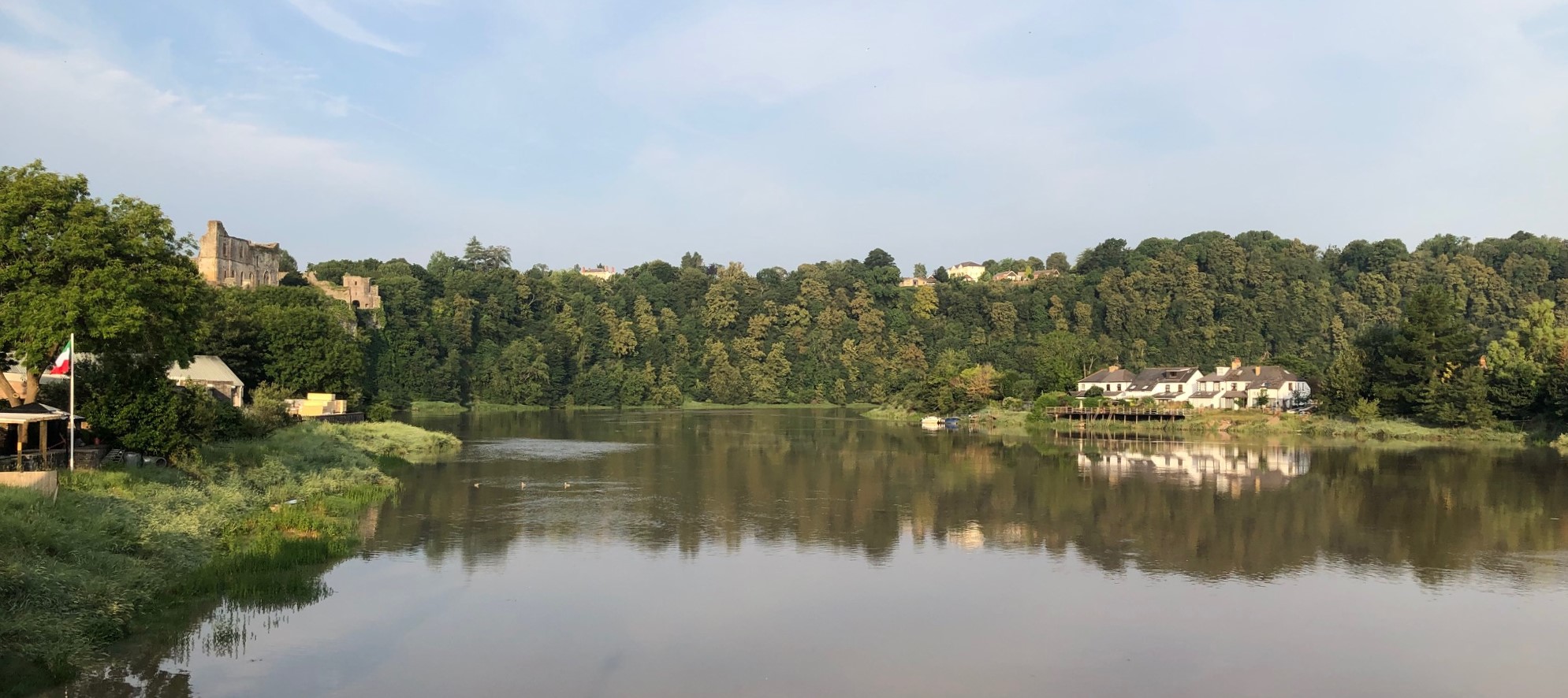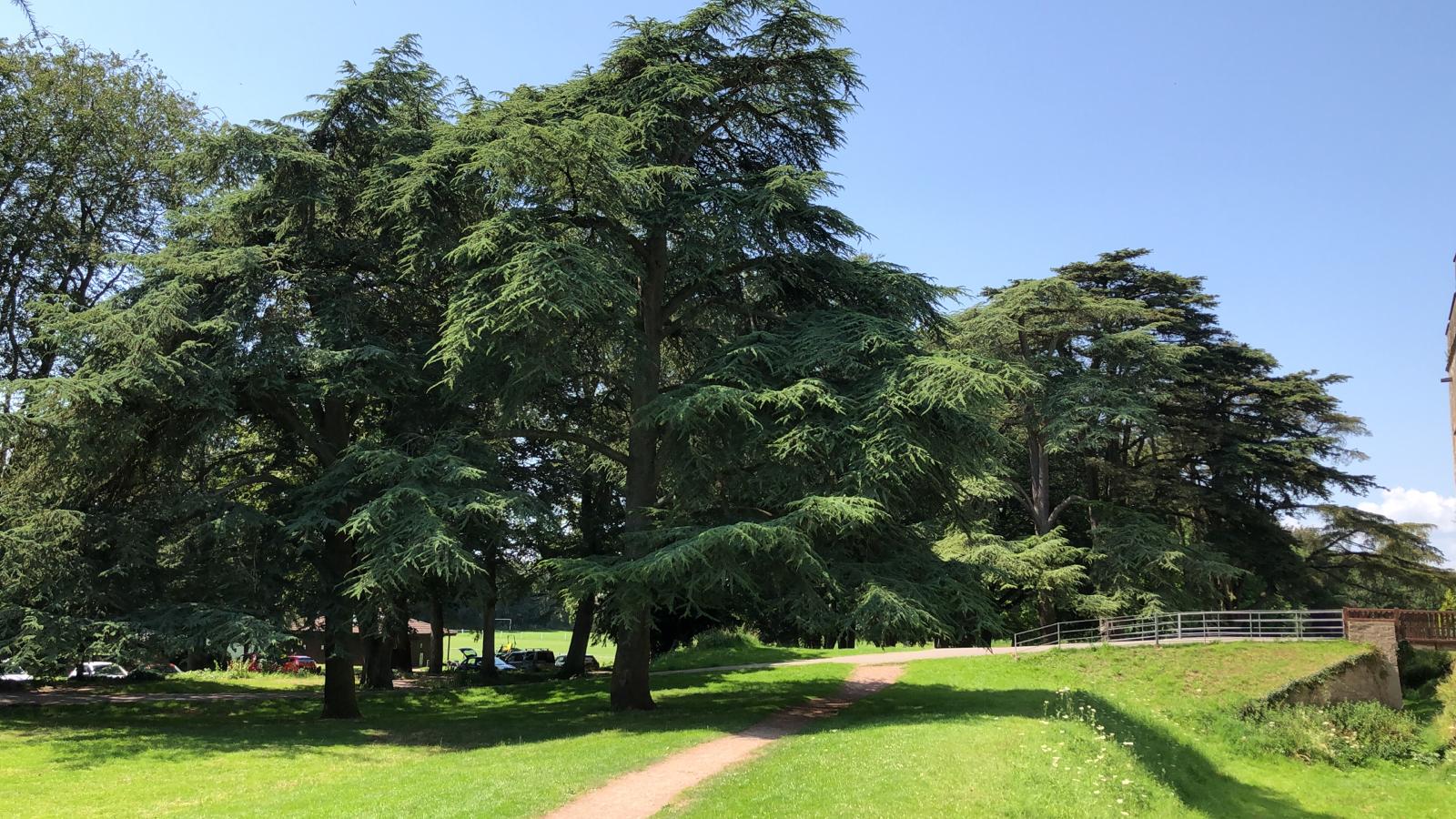Summary
Forest Research worked with Treeconomics and Monmouthshire County Council to deliver an i-Tree Eco project in Chepstow and Severnside.
This project has been delivered for the Gwent Green Grid partnership, with funding from the European Agricultural Fund for Rural Development.
The study area covers the urban areas of Chepstow and Severnside in South Monmouthshire. 200 sample plots were distributed within a regular grid over the study area, which covers 1,825 hectares. This spatial distribution ensures that enough information is collected from the different urban land characteristics. Details of ground cover, land use, shrubs and trees were collected in each plot by a team of volunteers and professional tree surveyors. The i-Tree Eco software was used to extrapolate the field data to provide information about the structure and composition of the whole urban forest, and to calculate ecosystem services provided by the trees.

Research Objectives
This project aimed to:
- Provide a baseline understanding of the urban forest in study area in South Monmouthshire
- Describe the structure and composition of the urban forest
- Quantify some significant ecosystem services provided by the urban forest
Findings and Recommendations
Findings
Monmouthshire’s urban forest provides ecosystem services with an estimated annual value of £757,300 per year. This includes air pollution removal, carbon sequestration, and avoided surface water runoff.
The study area has relatively low tree canopy cover (10.4%) compared to other coastal areas in Wales. There are an estimated 80,000 trees in the study area, containing at least 60 different species. The three most common species are hawthorn (Crataegus sp.), field maple (Acer campestre), and ash (Fraxinus excelsior).
There is a rich diversity of species in the tree population, but a few small stature species such as hawthorn (Crataegus sp.) and field maple (Acer campestre) dominate, which has an impact on the resilience of the urban forest and its continued ability to provide ecosystem services and amenity.
There are few large trees in the population, except in cemeteries, where large trees dominate.
Most of the urban forest is privately owned.

Photo credit: Kris Sales
Recommendations
Enhance and review Tree Preservation Orders and engage local residents in community projects to highlight the importance of the privately-owned part of the urban forest and help to protect this large portion of the tree population against removal.
Consider both native and non-native species for new tree planting, and use tools such as the Climate Matching Tool and Right Tree for a Changing Climate to make informed decisions about species choices, and to help to ensure the resilience of the urban forest in our changing climate.
Large trees provide benefits disproportional to their size and are an essential component of an urban forest. Monitor stress and mortality of existing large trees through regular surveys or a network of sensors. Where possible plant large-stature trees that will provide a host of benefits in the future.

Photo credit: Monmouthshire volunteer surveyor
Latest Update
Surveying was completed during summer 2021. Data analysis and reporting are complete. The final reports are available to download on this page.


